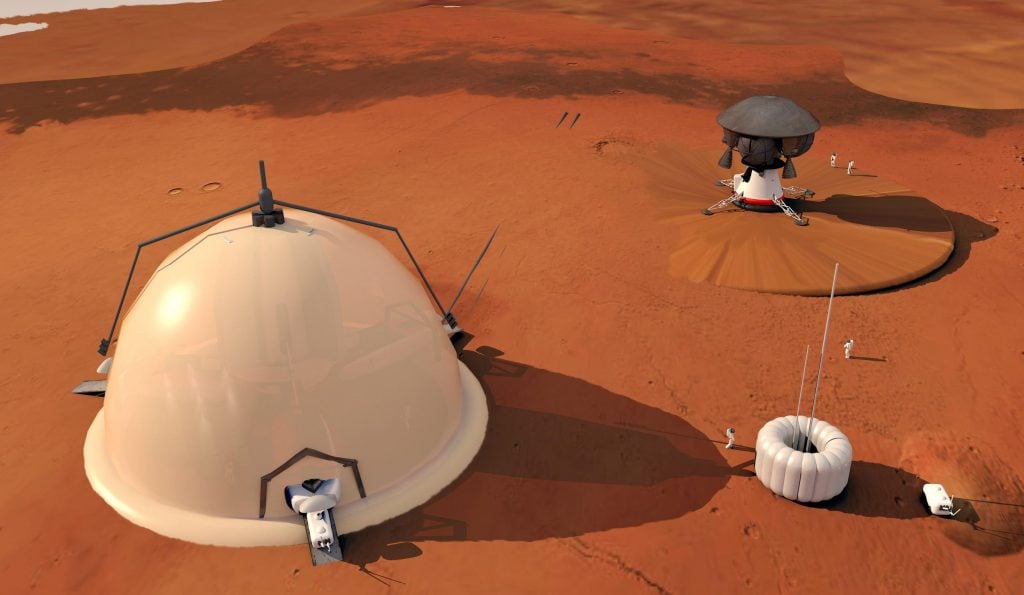A new concept study was conducted to support space exploration, particularly on Mars. According to the new concept, researchers who go to the Red Planet could live inside igloo structures on Mars’ north pole. This idea was suggested to take advantage of the abundant solar energy in that region, which could be used wisely by explorers.
Perchlorate structure
Scientists who have studied the poles on Mars know they consist of layered ice and dust, but also deposits of perchlorate. Perchlorate is widely used on Earth as rocket fuel. Researchers from Switzerland’s Federal Polytechnic School in Lausanne, known as EPFL in French, have now come up with a new concept for a Mars outpost.
The igloo structures on Mars’ north pole would host explorers on the planet’s surface for 288 days. At that time, the north pole is constantly covered in sunlight. The explorers would also be protected by a dome made of polyethylene fiber covered in a 10-foot-thick layer of ice which resembles an igloo.
Under the dome would be a living space consisting of three capsules that work as airlocks between the living space and the exterior. The dome would also protect Mars explorers from radiation and micrometeorite strikes while keeping the atmospheric pressure constant.
“The poles may pose more challenges in the beginning, but they are the best location for the long term since they harbor natural resources that we may be able to use,” lead author and EPFL student Anne-Marlene Rüede said in a statement about the study. “We wanted to develop a strategy based on technologies that have been selected accordingly and outline a test scenario so that, 20 years from now, astronauts will be able to carry out this kind of space mission.”
The explorers would live on Mars for at least nine months, gathering water, oxygen and nitrogen from the ice nearby. There is a lot of carbon dioxide in the Red Planet’s atmosphere and silicon, iron, aluminum, and sulfur in its soil, so explorers could use those resources to make bricks, glass, plastic and fuels like hydrogen and methanol.
Before the real manned mission would start, robots would go alone to Mars’ northern region so to construct the small living space for the crew and search for natural resources explorers can use. After that, the manned crew would come. Astronauts would use a crane-like system that would orbit the planet to move equipment from the spacecraft to the planet’s surface.
“The crane vehicle could be reused several times and would be powered by fuel produced on Mars. It would reduce the payload that space shuttles would have to carry up to the research base,” study co-author and EPFL scientist Claudio Leonardi said in the same statement. “The vehicle’s docking system would be similar to that used on the International Space Station: once a shuttle was docked, the vehicle would unload the cargo and crew and set them down on Mars.”
“We would need to conduct an initial mission to try everything out for the first time,” Rüede said. “And the better that initial mission is thought out, the faster we will be able to get things going and move on to colonization.”
The study on Mars explorers living in igloo structures on Mars’ north pole was accepted by the journal Acta Astronautica for publication and was presented last week at the International Tourism Talks of the Future conference in Vixouze, France.












